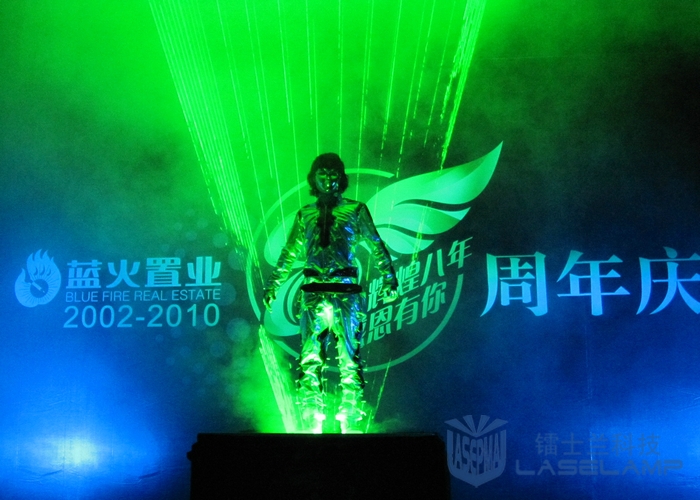

Composition and Introduction of Laser Dance Performance System
1. Laser.
The laser is the core of the laser dance performance system, with a wavelength of 532nm (emerald green). The stunning laser beam is projected from it. Its quality and performance determine the level of the laser dance system.
Generally speaking, the output power of a laser determines the difference in laser projection distance and brightness. Laser dance performance equipment with a power output of 3W is mostly used for indoor performances, while laser dance performance systems with a power output of 5W are mostly used for outdoor performances.
Main parameters of the laser
| Wavelength(nm) | 532 |
Output Power (W) | >3-5 |
Beam Mode | Continuous |
Power Stability | <3% |
Beam Divergence (mrad) | 2±0.2 |
Beam Diameter at Aperture (mm) | 3-5 |
Cooling System | TEC |
Polarization Ratio | >100:1 |
Beam Quality | ﹤2.0 |
Warm-up Time (minutes) | ﹤15min |
Operation Temperature (℃) | 10-35℃ |
Beam Roundness | ﹥90% |
Spectral Line width (nm) | ﹤0.1 |
Expected Lifetime (hours) | 10000 hours |
2. Laser control software and programs
Laser control software and programs are the brains and ideas of laser dance performance systems. The beam effect displayed by the laser dance is entirely orchestrated and commanded by it. This device uses PANGLOLIN professional laser control software that complies with the International Laser Demonstration Standard (ILDA) for scanning control. It can freely edit and project different beams and patterns, making it highly visually impactful. PANGLOLIN laser control software is one of the most common laser control software in the current market. It is produced in the United States and has a history of nearly thirty years of use. It is relatively simple to operate, easy to learn, easy to use, and relatively cheap. It is a universal configuration in the industry.
3. Laser scanning component
If the laser control software and programs are the brain and ideas of the laser dance performance system, the laser scanning component is the hand and pen that "writes" the already arranged programs in the brain, and the laser beams and patterns represented by different programs are scanned and projected by it.
According to the different forms of laser dance performances, scanning components can be divided into up cast, forward cast, and side cast. Generally speaking, up throw is the most commonly used and necessary part of laser dance performance systems. In pairs or multiplayer performances, the application of forward throw and side throw can demonstrate more dreamy effects.
Upward projection: The laser lamp is generally located below the stage, and the laser beam is projected from the lower direction of the stage. The dancer performs in the laser beam.
Forward projection: Located in front of or in front of the dancer, projecting a laser beam from the direction of the audience to the direction of the dancer, and cooperating with the dancer to perform the beam performance.
Side projection type: located on the side of the dancer, it can be one, two or more, used to project laser beams from the side onto the stage, and cooperate with the dancer to perform multiple laser beams. In the 2011 Spring Festival Gala, two side projection laser devices were used for the laser dance.
4. Laser Sword
The laser sword, also known as a handheld laser, is one of the important props used in laser performances. During the performance, the dancer holds one laser sword in each hand. According to the requirements of the performance program, it can perform various acrobatic actions such as receiving light, polishing, and dancing light. The requirements for laser swords in laser dance performances are stable performance, thicker beam (matching the performance laser beam), smaller volume, and high brightness.
5. Stage
The stage used for laser dance performances not only requires stability, ease of disassembly, but also requires good transparency and high intensity of the tabletop.
6. Other props
Including handheld reflectors for performing light conversion, laser protective glasses, performance clothing, etc.
